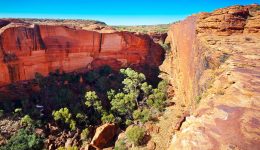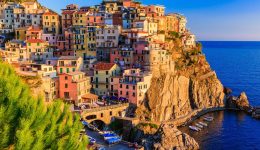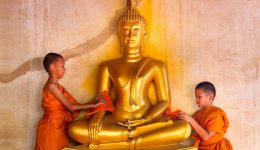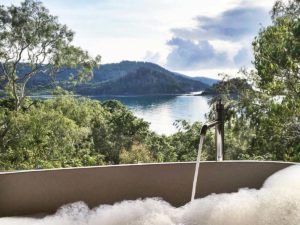Spotlight on Myanmar

It was with both trepidation and excitement that the plane dropped through the haze and we saw our first glimpse of Myanmar beneath us. With our prior understandings of Myanmar’s hardships and governmental problems, we were eager to make up our own minds about this obscure nation, relatively untouched by the boom of modern tourism. Outside, the green and yellow patchwork of farmland dotted with golden stupa spires loomed ever closer as we made our decent into Yangon.
We were greeted by a polite and smiley taxi driver who was eager to chat and practice his English; we learnt the words for thank you and of course the ubiquitous ‘Mingalaba!’ greeting you hear throughout the country. Yangon is a quintessentially Asian city, the kaleidoscopic colours of the markets, mixtures of smells and the cacophony of sound assaulted all the senses. All this was enjoyed with hardly a tourist in sight and everywhere we explored we were met with inquisitive smiles and incredible hospitality.
Our hotel sat in the heart of Chinatown, flanked by scores of street food stalls and within easy striking distance to The Sule and Sheswangadon Pagodas which glowed majestically and sat watchfully in the view from our hotel’s balcony.
Our next stop was Inle Lake and after a short taxi ride from the airport we arrived in Nang Shwe, the main hub of the Inle Lake region. Our first port of call was a delicious dinner at a popular local restaurant called The Lin Htett. Burmese food is an amalgamation of Thai, Indian, Chinese and Malay cuisines and as you can imagine the outcome is divine. Curry and fish was the order of the day, each with a hint of fresh creamy coconut and touch of mild spice. The meal was accompanied by the traditional plethora of dips and condiments, which perfectly complimented the food and crisp cold Myanmar beer.
Our next day we were booked with a local fisherman to take us out on our own private dugout boat for a day tour of the sights and cultures of Inle Lake. Our first big highlight was simply walking the labyrinth of canals through the village leading to the boat. We were able to peek into the daily lives of the locals and observe their morning activities unbridled. Our presence again was met with overwhelming smiles and friendliness.
A main canal served as the local highway to the entrance of the lake and we whizzed by local fisherman and fruit sellers busy with their daily grind. At the entrance to the lake were a group of fisherman still fishing in the traditional way. Perched precariously on one leg on the end of their dugout canoe, they use the other leg to somehow wrap around the oar and paddle, leaving their hands free for casting and negotiating their nets. These incredibly skilled people were more than happy that we got a few snaps of them with their bodies silhouetted by the early morning sun.
The people of Inle Lake, oppressed in the past, had been denied land on which to cultivate. Using their incredible ingenuity they learnt to pick and weave the lake reeds into a vast network of flourishing green gardens and vegetable crops. Dotted amongst this spectacle lay their houses perched on stilts high above the greenery. Dogs lay curled and sleeping on the verandas, whilst children splashed and played, as the adults tended to their crops and lifeblood.
We were lucky enough to be visiting on a market day and so with no particular return time, we were let off at the shore to wander through the houses and sunflower fields to the bustle of the weekly trading post. As with all of Myanmar, the landscape was interspersed with thousands of golden stupas ranging from petite to grandiose.
Returning to the boat, we zipped through different villages of stilted houses. It had a distinctly Venetian feel, with a wonderful Asian twist. Every time we passed the locals we received ‘Mingalaba!’ greetings and huge ear to ear genuine beaming smiles – a dying phenomenon lost in some over-visited South East Asian destinations.
We visited local cooperatives and were shown not only the beautiful products and produce of the lake region but the painstaking and skilled craftsmanship of the local weavers, boat makers and cigar rollers. For lunch we dined in a local eatery on fresh fish and salad overlooking the water and photographed the fishermen and locals going about their business below. We visited magnificent temples clad in gold and teak and wandered around monasteries where scarlet robed monks sat and prayed in ambiance. We returned back to Nang Shwe that evening glimpsing a few of the beautiful upmarket resort style hotels on the shore, each with its own architectural twist on the local buildings.
After a night of succulent and delicious food and a tipple of the local rum, we hired bikes and rode around the countryside gaining a brief insight to the way of life out of reach to the few tourists on foot in town. An informative visit to the local museum, set in a magnificent colonial building, was followed by a visit to the famous Shwe Yaunghwe Kyaung teak monastery where cheeky young monks peaked out of the exquisitely carved elliptical windows.
Mandalay, synonymous with the children’s nursery rhyme ‘Nelly the elephant’ was meant to be only a launching point for our boat trip down the Ayeyarwady. We were however impressed by the regal grandeur of Mandalay Palace and the panoramic views from Mandalay Hill, where Buddha himself was said to have sat. A dusk visit to the famous ‘U Bein’ Bridge was a photographer’s dream and despite the bustle, was incredible. We were pleased that behind the industrial and progressive facade lay a city steeped in rich culture and tradition.
An early rise saw us wave goodbye to Mandalay from the comfort of reclined wicker chairs on the deck of our boat. We set off for Bagan whilst the first glimpses of orange sunlight danced on the horizon. We spent the day watching the world go by as we chugged down the vast Ayeyarwady. The real draw was a chance to peek at some of the more remote and isolated communities living along the banks. Children swam and waved and local girls would wade into the river with baskets of fruit to sell when we stopped. We pulled into the main jetty as the sun went to sleep, rested and excited for what is Myanmar’s most famous site – Bagan.
Opting for a young man with a horse and cart for transport, we clambered aboard and rode to the area of New Bagan where our hotel was. As we travelled, there were local boys happily singing in groups with guitars, which only saw to enhance the ambiance of this astonishing place. A delicious local curry was had for dinner, after which we retired to our beautiful courtyard hotel.
After a refreshing morning swim, we decided to hire one of the abundant electric bikes. Like a moped but beautifully silent, these bikes have given a tranquil and green option for tourists to explore Bagan’s sprawling temple complexes. As we set off to the main cluster of temples, we could see the spires of thousands upon thousands of stupas pointing towards the heavens above. It was the first time we were able to appreciate the sheer size and grandeur of Bagan’s treasures.
With an almost daunting amount of amazing things to see and do, we found it best to simply explore and wander in wonder. The crumbling remains of a decadent past and great looming temples of awe and majesty lurked around every corner. Every bend in the road welcomed new views and angles, each one seemingly more beautiful than the next.
For sunset, the Shwesandaw Temple was tipped to be the best place, which we found in the dying light, to be reasonably uncrowded. There are a few wonders in this world that well and truly deserve the term ‘awe inspiring’ – the Taj Mahal, Machu Picchu, Giza’s Pyramid, the Great Wall and now Bagan. The sight at the top was truly breathtaking. In every direction stretched uncountable stupas and temples, each with its own architectural personality. The haze of the day lay thick on the ground, as the last light of the sun highlighted the luminescent gold leaf of the spires. Flocks of birds rose from the tangled branches of trees, as below us monks shuffled round in chanting prayer. It was a picture of transcendental beauty and ranks easily as one of the top sunset spots on the globe.
Close to Bagan is the Taung Kalat temple perched watchfully atop Mount Popa. This was an interesting side trip from Bagan and gave us a chance to see some of the surrounding countryside. Clad with inquisitive monkeys, the temple and its views were yet again a photographer’s dream. We were sad to leave Bagan as one could spend months there exploring, discovering and gorging on the exquisite array of food served at the many stalls and restaurants. The allure of clear blue water and fine white sand however, proved too much as we headed west to the beach.
We were greeted in Ngpali by a beautiful wooden panel bus which gave us a breezy ride to our resort. Upon arrival we were greeted with fresh local juice and shown though the immaculate gardens to our beautiful room. The beach was stunning. Fringed with palm trees, the powdery sand was lapped at by impossibly clear water, giving way to a deep turquoise horizon. Dotted along the beach were small restaurants and a few stalls selling handicrafts, fruit and offering massages.
Further down the beach was a local fishing village consisting of mostly tumbledown huts, their friendly and smiling occupants hard at work outside. Great areas of dried fish lay sprawled across the ground with their scaly skin twinkling in the midday sun. Local children ran down to greet us and giggled and played without seemingly a care in the world. What a beautiful spot it was. Seafood was cheap, plentiful, fresh and scrumptious and every night we tried a different establishment, each with its own mouth-watering menus and specials; also every night was celebrated with Sundowners on the beautiful deck of the hotel whilst the sun, emanating pinks and reds, dipped below the horizon of the Bay of Bengal.
Our last night was spent back in Yangon and what better way to spend it than to visit the Shwedagon Pagoda. It’s hard to put into words just quite how spectacular it is. The grounds of the Pagoda alone were so magnificent, it was like strolling through a little slice of Nirvana itself. Everywhere candles flickered, adding to the light of the illuminated monuments, each with astounding, intricate and complex decoration. Adding to the ambiance were hundreds of monks, sitting in transfixed and deep meditation. Scores of locals came to worship, each with a small and personal ritual. Everywhere we moved we were met with smiles as we wondered, mouths agape at the staggering decadence. We left for one last dinner, with the gentle chanting of the monks ringing through the air.
Had we had more time, we could have stayed easily a week longer in every place. Myanmar boasts some of the most diverse and inspiring draw cards in the world and even with our exploration, we only just scratched the surface of the limitless jewels Myanmar has to offer. Overwhelmingly however, by far and away, Myanmar‘s biggest asset is undoubtedly the people. Never have I been to a place where we have been greeted so warmly by absolutely everybody and in the face of such adversity .The humbleness, hospitality and kindness we were shown, will always stay with me. A true gem to witness, Myanmar is undoubtedly one of our favourite destinations in the world. Get here before the crowds come.

















